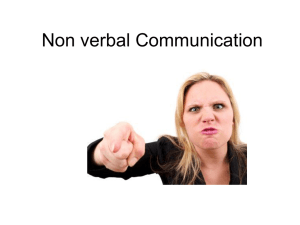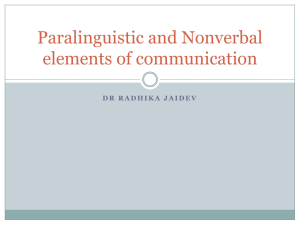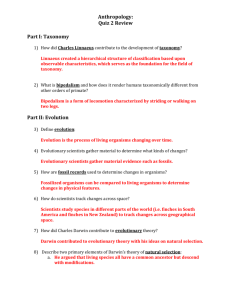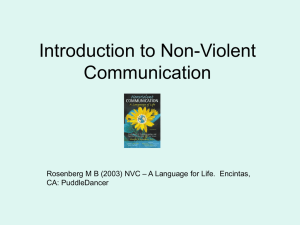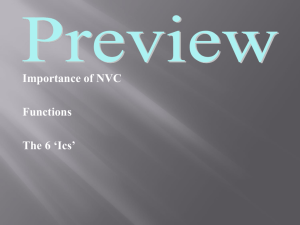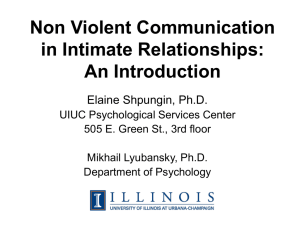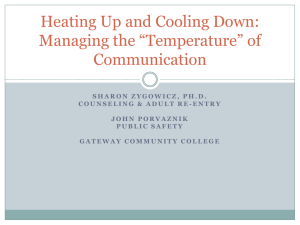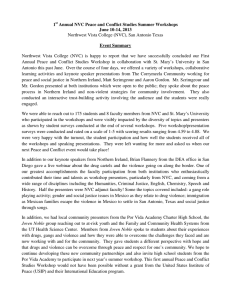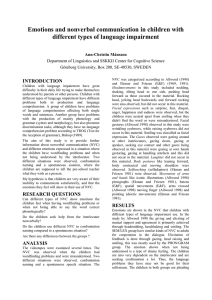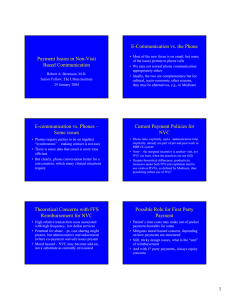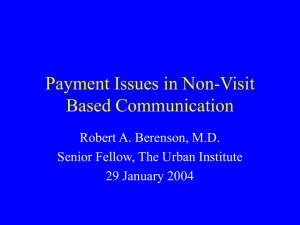Nonverbal Communication
advertisement
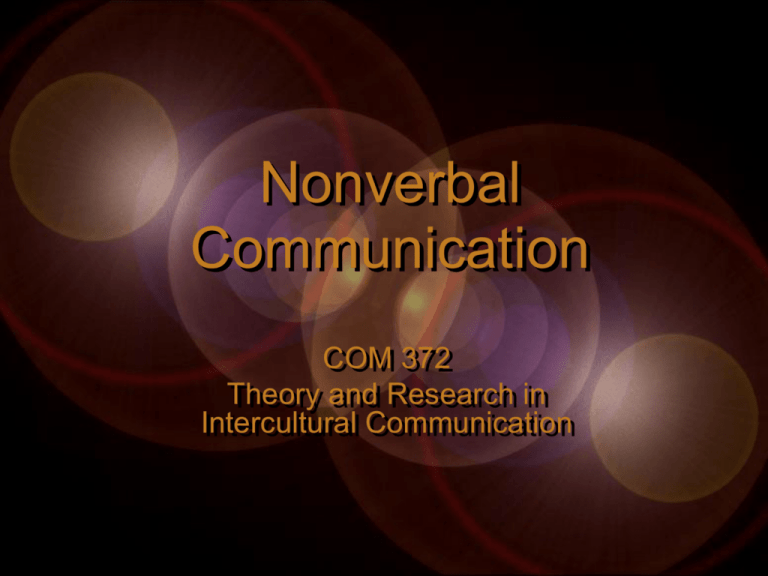
Nonverbal Communication COM 372 Theory and Research in Intercultural Communication Defining Nonverbal Communication • “Messages people send to others that do not contain words, such as messages tsent through body motions; vocal qualities; and the use of time, space, artifacdts, dress, and even smell” (Neuliep, 2006, p. 286) • When senders OR receivers give meaning? (That is, when behavior has “meaning potential”) • NOTE: Not “sign language” (which is verbal) Relation to Verbal Comm • The role of “emblems” • “Signs” and “symbols” – Indexical – Iconic – Symbolic • Attribution • Paralanguage (neither V nor NV!) Relation to Verbal Comm • • • • • • Repetition Substitution Accentuation Compliment Contradict Regulate Functions of NVC • Replacing/Amplifying verbal messages • Sending uncomfortable messages • Impression management • Identity management • Goals: persuasion, comfort, etc. • Clarifying relationships Channels & Issues of NVC Issue #1: Emotion • Channels involved – Kinesics • Posture • Gesture – – – – – Emblems Illustrators Adaptors Regulators Affect Display Channels & Issues of NVC Issue #1: The Question • Is facial display of emotion universal? • The evidence • “Display rules” Issue #2: Contact Cultures: Is it useful to think of, group cultures in terms of “contact” behaviors? Channels & Issues of NVC Issue #2: Contact Cultures • Definition: • Channels involved – Proxemics • Levels of space (Table 1) • Territory (primary, secondary, tertiary, national) • “Queuing rules” – – – – Oculesics Haptics Olfactics Body angle Space…the final frontier • Territory – Primary, secondary, tertiary – Marking your territory – Examples • Personal space – ET Hall’s in the zone… Space violations: EVT • Background – Arousal Theory: Arousal Negative Evaluation – Equilibrium Theory: Disequilibrium Compensation – Both assume violations of expecations will be bad! • Main Point – We as individuals, have expectations about interaction with others. These expectations include many things such as physical proximity, speech rate, volume, eye contact and touching. Normally, we are not aware of these expectations until they are violated. These expectations form the focus of the theory. These violations are interpreted on a continuum of valences from bad to good. Main Concepts • Expectancies (Expectations – Enduring patterns of anticipated verbal and nonverbal behaviors – Two kinds: predictive & prescriptive • Predictive- the degree to which a behavior is regarded as appropriate, desired, or preferred • Prescriptive- idealized standards of conduct rather than actual communicative practice – Three sources (Interaction Adaptation Theory): • Characteristic behavior of the person (“modal”) • Social expectations for the situation • Receiver’s desired behavior in the situation Channels & Issues of NVC Issue #3: Time • Linear/Cyclical • Polychronic/Monochronic • Past/Present/Future • Formal/Informal • “On-time” v. “In time” Channels & Issues of NVC Issue #4: Silence & Sound • Paralinguistics & the problem of “volume” • The use & meaning of silence(s) – Basso’s hypothesis – Braithwaite’s extension – Other “silences” On misunderstanding silence & sound Beginning to theorize • http://www.youtube.com/watch?v=3fda G7ULqAo&feature=related • http://www.youtube.com/watch?v=jbd1tr Nz9bY Semiotics – Many views/aspects! – Roland Barthes (Mythologies) 1. Sign = signifier + signified 2. Sign systems (codes) 3. Ideology (sign/semiotic shift, myth)
